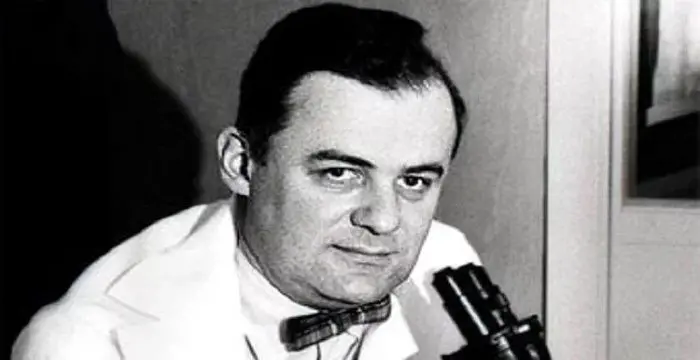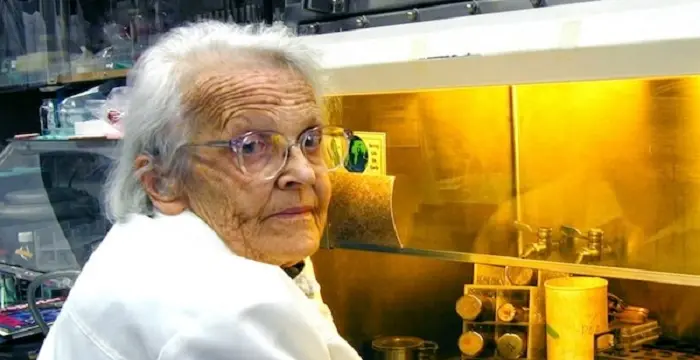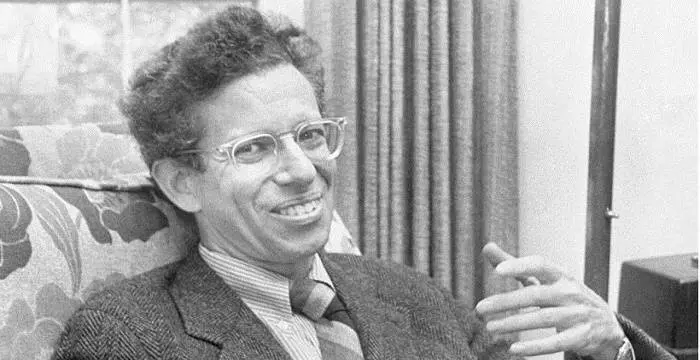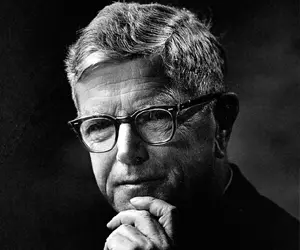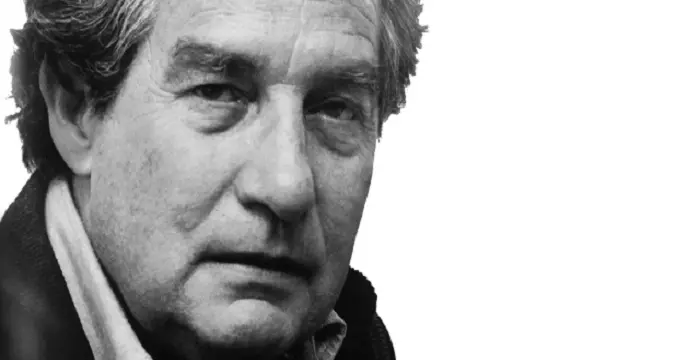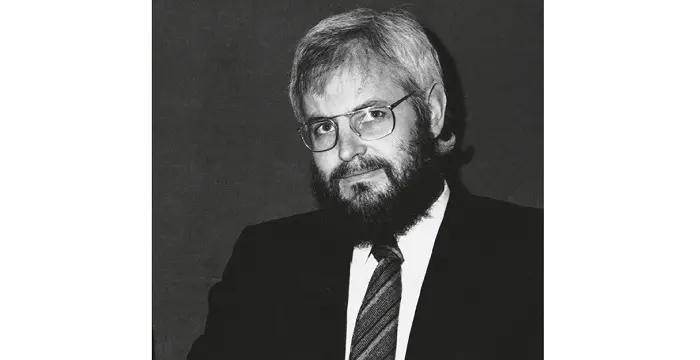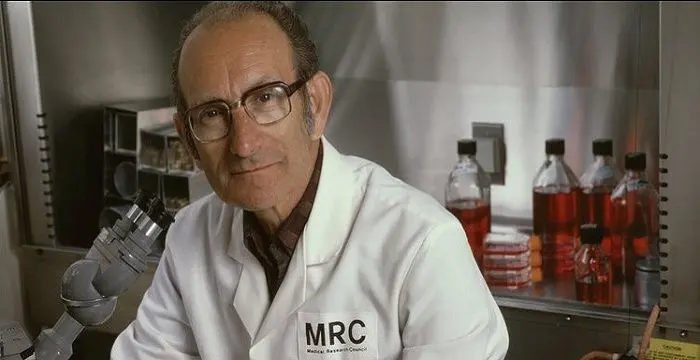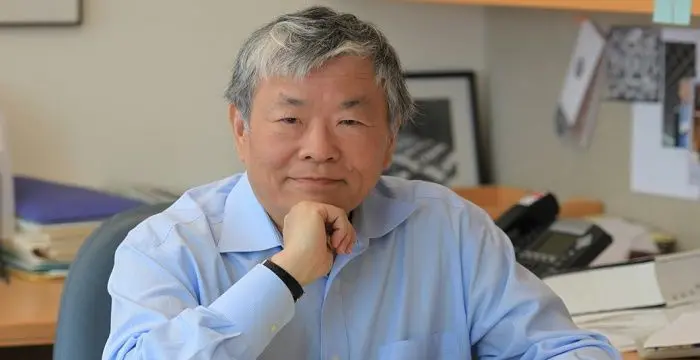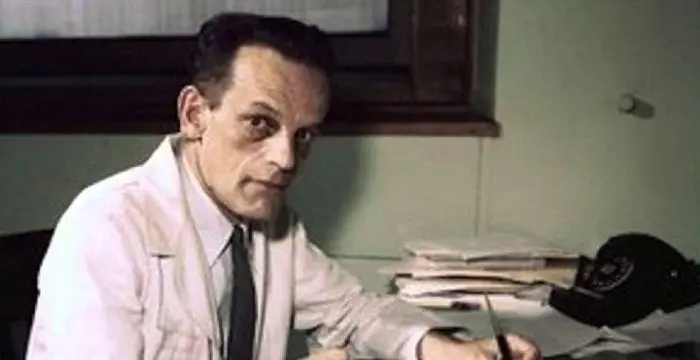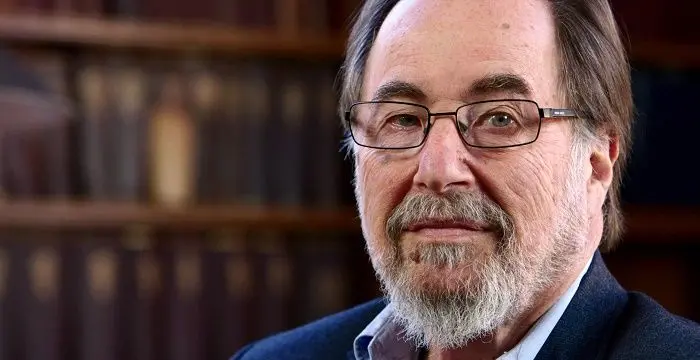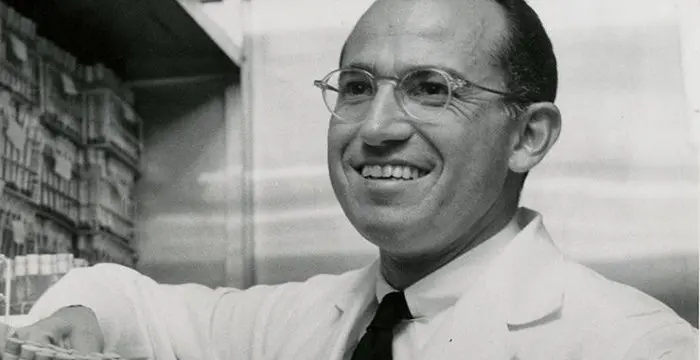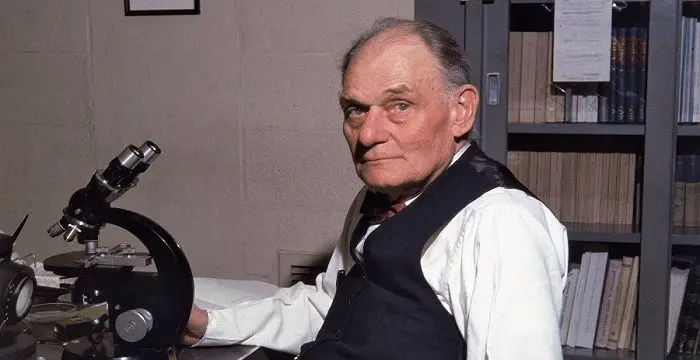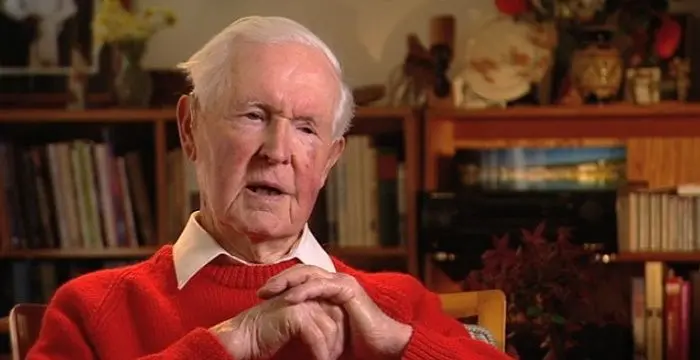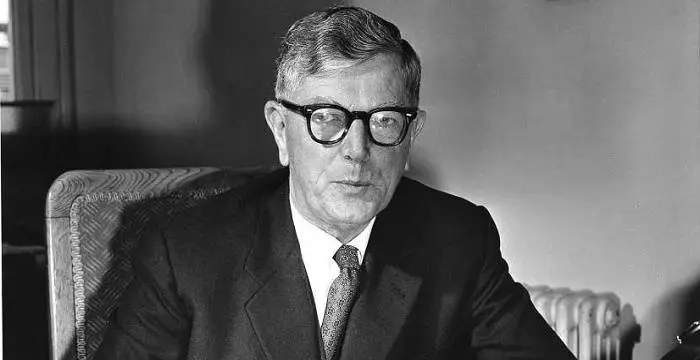
Frank Macfarlane Burnet - Virologists, Birthday and Life
Frank Macfarlane Burnet's Personal Details
Sir Frank Macfarlane Burnet was an Australian virologist and immunologist, known for his contributions in human biology
| Information | Detail |
|---|---|
| Birthday | September 3, 1899 |
| Died on | August 31, 1985 |
| Nationality | Australian |
| Famous | University Of Melbourne, Scientists, Immunologists, Microbiologists, Virologists, Noble Prize Laureate, Virologists |
| Spouses | Edith Linda Marston Druce (1928-1973), Hazel G. Jenkins (1976 till his death) |
| Known as | Mac Burnet, Sir Frank Macfarlane Burnet, Macfarlane, F. M. Burnet |
| Childrens | Elizabeth and Deborah, Ian Burnet |
| Universities |
|
| Notable Alumnis |
|
| Birth Place | Traralgon |
| Religion | Agnosticism |
| Gender | Male |
| Father | Frank Burnet |
| Mother | Hadassah Burnet |
| Sun Sign | Virgo |
| Born in | Traralgon |
| Famous as | Virologist & Noble Prize Laureate |
| Died at Age | 85 |
// Famous Virologists
Frederick Chapman Robbins
Frederick Chapman Robbins was an American paediatrician and virologist who was one of the joint winners of the 1954 Nobel Prize in Physiology 1954. Check out this biography to know about his childhood, life, achievements, works & timeline.
Marguerite Vogt
Marguerite Vogt was a German-born American cancer biologist and virologist best known for her research on polio and cancer.
Howard Martin Temin
Howard Martin Temin was an American geneticist and virologist who won a share of the 1975 Nobel Prize in Physiology or Medicine.
Frank Macfarlane Burnet's photo
Who is Frank Macfarlane Burnet?
Deemed to be the greatest scientist produced by Australia, Frank Macfarlane Burnet gave sixty years of his life to human science, discovering and researching human infectious diseases. Starting off with microbiology, he branched out into the fields of bacteriology, followed by virology and immunology. He pioneered in the study of autoimmune conditions, where a disease is caused by the immune system attacking the body’s own tissues, and application of ecological principles to viral diseases. His initial experiments and work paved way for developments in various medical areas, such as vaccines, tissue transplantation, and monoclonal antibody and associated therapies. This scientific genius gained recognition globally with several Australian and international awards to his credit, most importantly the Nobel Prize for Physiology or Medicine. His work on virus growing processes in hen’s eggs still serves as the basis for producing vaccines for influenza in the modern times. His contributions to Australian science won him the title of the first Australian of the Year. Apart from making great discoveries and performing experiments, he also wrote a large number of books and delivered lectures on various problem areas of human biology and human affairs, cancer and ageing.
// Famous Noble Prize Laureate
Octavio Paz
Octavio Paz Lozano was a Nobel Prize winning Mexican poet, essayist and a diplomat. Check out this biography to know about his childhood, family life, achievements and other facts related to his life.
Childhood & Early Life
Frank Macfarlane Burnet was born on September 3, 1899 in Traralgon, eastern Victoria, as the second of seven kids, to Scottish emigrants Frank Burnet and Hadassah Burnet.
He went to state schools in Traralgon and Terang, before moving to boarder Geelong College on full scholarship in 1913.
He graduated in 1916 and completed his Bachelors in Medicine and Surgery from Ormond College, University of Melbourne, on a residential scholarship, in 1922.
In 1923, he started researching on the agglutinin reactions in typhoid fever at Walter and Eliza Hall Institute of Medical Research. He was also working as a research pathologist at Royal Melbourne Hospital.
In 1924, he obtained his doctorate degree in medicine and continued his research in bacteriology at Lister Institute of Preventive Medicine, London, during 1925-27, through the Beit Fellowship.
He completed his PhD in the research conducted in bacteriophages, a virus that affects bacteria, from the University of London, in 1928.
Career
Upon his return to Melbourne in 1928, he was appointed as assistant director of Walter and Eliza Hall Institute, by director Dr. Charles Kellaway, and carried out researches in staphylococcal toxins, besides his ongoing bacteriophages study.
In 1932, he took a two-year leave and went to the world-leading National Institute for Medical Research, London, to conduct research on virus. He discovered the influenza virus and developed a chick-embryo technique for virus culture.
Despite being offered a permanent position at the Institute by its director, Sir Henry Dale, he returned to Melbourne in 1934, to resume his research on virology.
In 1940, he released his first book ‘Biological Aspects of Infectious Disease’, which influenced the biological world and was published in Japanese, German, Italian and Spanish.
In order to prevent the potential outbreak of influenza pandemic during World War II, he started working towards producing a vaccine for this deadly disease.
After Sir Charles Kellaway went to work as the Director of Wellcome Foundation, London, he became the Director of Walter and Eliza Hall Institute, in 1944, rejecting a chair offered at the Harvard University.
After retiring from Walter and Eliza Hall Institute in 1965, he continued to give guest lectures at the University of Melbourne’s microbiology department and write on virology, immunology, human biology, philosophy and ethics.
He was associated with various national and international committees during his later life, besides serving as the chairman of Australian Radiation Advisory Committee (1955-59) and British Commonwealth Foundation (1966-69).
He penned several books on immunology and virology, like ‘Virus as Organism’, ‘Viruses and Man’, ‘The Clonal Selection Theory of Acquired Immunity’, and ‘Immunological Surveillance’.
Major Discoveries
In 1934, he discovered the causal organisms of psittacosis and Q fever as Rickettsia burnetii, and performed studies on poliovirus, herpes simplex virus, and epidemiology.
In 1956, his increased interest in Niels Kaj Jerne’s natural selection hypothesis led to the development of clonal selection, thus forming one of the concepts of immunology, known as Burnet’s clonal selection theory.
Awards & Achievements
The Royal Society honored him with the Royal Medal in 1947 and Copley Medal in 1959, for his contribution in the field of virology.
He received the Albert Lasker Award for Basic Medical Research, in 1952, and the Order of Merit at the Queen’s Birthday Honors, in 1958.
In 1960, he was honored with the prestigious Nobel Prize for Physiology or Medicine shared with Sir Peter Medawar, for discovering acquired immunological tolerance, a concept which led to the invention of tissue transplantation.
He received the Australian of the Year award in 1960 and a Gold and Silver Star from the Japanese Order of the Rising Sun in 1961.
At the 1969 New Year Honors, he became a recipient of Knight Commander of the Order of the British Empire.
He received the Elizabeth II Jubilee Medal in 1977 and became the fourth person to be knighted by the Order of Australia in 1978.
He served as the President at the International Association of Microbiological Societies (1953-57), Australian and New Zealand Association for the Advancement of Science (1957), and Australian Academy of Science (1955-59).
He obtained ten honorary degrees from various esteemed universities and colleges, including Oxford, Harvard, Cambridge, Hahnemann Medical College, Medical University of South Carolina, and University of Melbourne.
Personal Life & Legacy
He got engaged to Edith Linda Marston Druce, while working in London, and married her in 1928, upon his return to Australia. The couple had one son and two daughters – Ian Burnet, Elizabeth and Deborah. In 1973, his wife Linda died of lymphoid leukemia, affecting the lymphocyte cells, on which he had been conducting his research.
In 1976, he married widowed singer, Hazel Gertrude Jenkin, who had been working as a voluntary librarian at Ormond College’s microbiology department.
He was operated for colorectal cancer in November 1984 and made a good recovery, but fell ill again with secondary lesions, affecting his thorax and legs, and died on August 31, 1985 at Port Fairy.
The Government of Australia honored him with a state funeral, after which he was laid to rest at Tower Hill Cemetery, near Port Fairy.
In 1975, Australia Post released a 33-cent stamp, as an honor of his research work on immunology.
As a tribute to Burnet, Walter and Eliza Hall Institute named the Burnet Clinical Research Unit in 1986 and introduced the Burnet Prize in 1987, which is awarded to an exceptional early-career scientist annually.
The 45-cent stamp with Burnet and his fellow graduate Jean Macnamara was among the four Australian stamps released in 1995 commemorating seven Australian medical scientists.
As part of his centenary birth celebrations, his statue was erected in Franklin Street, Traralgon, in 1999.
Trivia
Under his able guidance, various notable virologists, like Gordon Ada, Stephen Fazekas de St. Groth, Alick Isaacs, and Frank Fenner contributed in different areas, such as Murray Valley encephalitis, poxviruses, influenza and herpes.
// Famous Immunologists
Georges J. F. Kohler
Georges J. F. Kohler was a German immunologist who received the Nobel Prize in Physiology or Medicine in 1984. Check this biography to get details about his life, profile and timeline.
Cesar Milstein
Cesar Milstein was an Argentinian biochemist who received the Nobel Prize for his discovery of monoclonal antibody. Explore this biography to get details about his life, career and scientific discoveries.
Susumu Tonegawa
Susumu Tonegawa is a Japanese molecular biologist who was awarded the Nobel Prize for Physiology or Medicine in 1987. This biography of Susumu Tonegawa provides detailed information about his childhood, life, achievements, works & timeline.
Frank Macfarlane Burnet biography timelines
- // 3rd Sep 1899Frank Macfarlane Burnet was born on September 3, 1899 in Traralgon, eastern Victoria, as the second of seven kids, to Scottish emigrants Frank Burnet and Hadassah Burnet.
- // 1913He went to state schools in Traralgon and Terang, before moving to boarder Geelong College on full scholarship in 1913.
- // 1916 To 1922He graduated in 1916 and completed his Bachelors in Medicine and Surgery from Ormond College, University of Melbourne, on a residential scholarship, in 1922.
- // 1923In 1923, he started researching on the agglutinin reactions in typhoid fever at Walter and Eliza Hall Institute of Medical Research. He was also working as a research pathologist at Royal Melbourne Hospital.
- // 1924 To 1927In 1924, he obtained his doctorate degree in medicine and continued his research in bacteriology at Lister Institute of Preventive Medicine, London, during 1925-27, through the Beit Fellowship.
- // 1928He completed his PhD in the research conducted in bacteriophages, a virus that affects bacteria, from the University of London, in 1928.
- // 1928Upon his return to Melbourne in 1928, he was appointed as assistant director of Walter and Eliza Hall Institute, by director Dr. Charles Kellaway, and carried out researches in staphylococcal toxins, besides his ongoing bacteriophages study.
- // 1928 To 1973He got engaged to Edith Linda Marston Druce, while working in London, and married her in 1928, upon his return to Australia. The couple had one son and two daughters – Ian Burnet, Elizabeth and Deborah. In 1973, his wife Linda died of lymphoid leukemia, affecting the lymphocyte cells, on which he had been conducting his research.
- // 1932In 1932, he took a two-year leave and went to the world-leading National Institute for Medical Research, London, to conduct research on virus. He discovered the influenza virus and developed a chick-embryo technique for virus culture.
- // 1934Despite being offered a permanent position at the Institute by its director, Sir Henry Dale, he returned to Melbourne in 1934, to resume his research on virology.
- // 1934In 1934, he discovered the causal organisms of psittacosis and Q fever as Rickettsia burnetii, and performed studies on poliovirus, herpes simplex virus, and epidemiology.
- // 1940In 1940, he released his first book ‘Biological Aspects of Infectious Disease’, which influenced the biological world and was published in Japanese, German, Italian and Spanish.
- // 1944After Sir Charles Kellaway went to work as the Director of Wellcome Foundation, London, he became the Director of Walter and Eliza Hall Institute, in 1944, rejecting a chair offered at the Harvard University.
- // 1947 To 1959The Royal Society honored him with the Royal Medal in 1947 and Copley Medal in 1959, for his contribution in the field of virology.
- // 1952 To 1958He received the Albert Lasker Award for Basic Medical Research, in 1952, and the Order of Merit at the Queen’s Birthday Honors, in 1958.
- // 1955 To 1966He was associated with various national and international committees during his later life, besides serving as the chairman of Australian Radiation Advisory Committee (1955-59) and British Commonwealth Foundation (1966-69).
- // 1956In 1956, his increased interest in Niels Kaj Jerne’s natural selection hypothesis led to the development of clonal selection, thus forming one of the concepts of immunology, known as Burnet’s clonal selection theory.
- // 1960In 1960, he was honored with the prestigious Nobel Prize for Physiology or Medicine shared with Sir Peter Medawar, for discovering acquired immunological tolerance, a concept which led to the invention of tissue transplantation.
- // 1960 To 1961He received the Australian of the Year award in 1960 and a Gold and Silver Star from the Japanese Order of the Rising Sun in 1961.
- // 1965After retiring from Walter and Eliza Hall Institute in 1965, he continued to give guest lectures at the University of Melbourne’s microbiology department and write on virology, immunology, human biology, philosophy and ethics.
- // 1969At the 1969 New Year Honors, he became a recipient of Knight Commander of the Order of the British Empire.
- // 1975In 1975, Australia Post released a 33-cent stamp, as an honor of his research work on immunology.
- // 1976In 1976, he married widowed singer, Hazel Gertrude Jenkin, who had been working as a voluntary librarian at Ormond College’s microbiology department.
- // 1977 To 1978He received the Elizabeth II Jubilee Medal in 1977 and became the fourth person to be knighted by the Order of Australia in 1978.
- // Nov 1984 To 31st Aug 1985He was operated for colorectal cancer in November 1984 and made a good recovery, but fell ill again with secondary lesions, affecting his thorax and legs, and died on August 31, 1985 at Port Fairy.
- // 1986 To 1987As a tribute to Burnet, Walter and Eliza Hall Institute named the Burnet Clinical Research Unit in 1986 and introduced the Burnet Prize in 1987, which is awarded to an exceptional early-career scientist annually.
- // 1995The 45-cent stamp with Burnet and his fellow graduate Jean Macnamara was among the four Australian stamps released in 1995 commemorating seven Australian medical scientists.
- // 1999As part of his centenary birth celebrations, his statue was erected in Franklin Street, Traralgon, in 1999.
// Famous Virologists
Max Theiler
Max Theiler was a South African-American virologist who developed a vaccine against yellow fever. This biography of Max Theiler provides detailed information about his childhood, life, achievements, works & timeline.
Frederick Chapman Robbins
Frederick Chapman Robbins was an American paediatrician and virologist who was one of the joint winners of the 1954 Nobel Prize in Physiology 1954. Check out this biography to know about his childhood, life, achievements, works & timeline.
David Baltimore
David Baltimore is an American biologist who won a share of the 1975 Nobel Prize in Physiology or Medicine. This biography of David Baltimore provides detailed information about his childhood, life, achievements, works & timeline.
Jonas Salk
Jonas Salk was a famous American virologist and medical researcher who discovered the polio vaccine. To know more about his childhood, career, profile and timeline read on.
John Franklin Enders
John Franklin Enders, a Nobel laureate, is popularly referred to as the Father of modern vaccines. With this biography, check out detailed information about his life, career and scientific discoveries.
Frank Fenner
Frank Fenner was an Australian scientist who made remarkable contribution in the field of virology. With this biography, explore in details about his life, profile, childhood and timeline.
Frank Macfarlane Burnet's FAQ
What is Frank Macfarlane Burnet birthday?
Frank Macfarlane Burnet was born at 1899-09-03
When was Frank Macfarlane Burnet died?
Frank Macfarlane Burnet was died at 1985-08-31
Where was Frank Macfarlane Burnet died?
Frank Macfarlane Burnet was died in Port Fairy
Which age was Frank Macfarlane Burnet died?
Frank Macfarlane Burnet was died at age 85
Where is Frank Macfarlane Burnet's birth place?
Frank Macfarlane Burnet was born in Traralgon
What is Frank Macfarlane Burnet nationalities?
Frank Macfarlane Burnet's nationalities is Australian
Who is Frank Macfarlane Burnet spouses?
Frank Macfarlane Burnet's spouses is Edith Linda Marston Druce (1928-1973), Hazel G. Jenkins (1976 till his death)
Who is Frank Macfarlane Burnet childrens?
Frank Macfarlane Burnet's childrens is Elizabeth and Deborah, Ian Burnet
What was Frank Macfarlane Burnet universities?
Frank Macfarlane Burnet studied at University Of Melbourne, University of Melbourne, University of London, The Geelong College
What was Frank Macfarlane Burnet notable alumnis?
Frank Macfarlane Burnet's notable alumnis is University Of Melbourne
What is Frank Macfarlane Burnet's religion?
Frank Macfarlane Burnet's religion is Agnosticism
Who is Frank Macfarlane Burnet's father?
Frank Macfarlane Burnet's father is Frank Burnet
Who is Frank Macfarlane Burnet's mother?
Frank Macfarlane Burnet's mother is Hadassah Burnet
What is Frank Macfarlane Burnet's sun sign?
Frank Macfarlane Burnet is Virgo
How famous is Frank Macfarlane Burnet?
Frank Macfarlane Burnet is famouse as Virologist & Noble Prize Laureate
